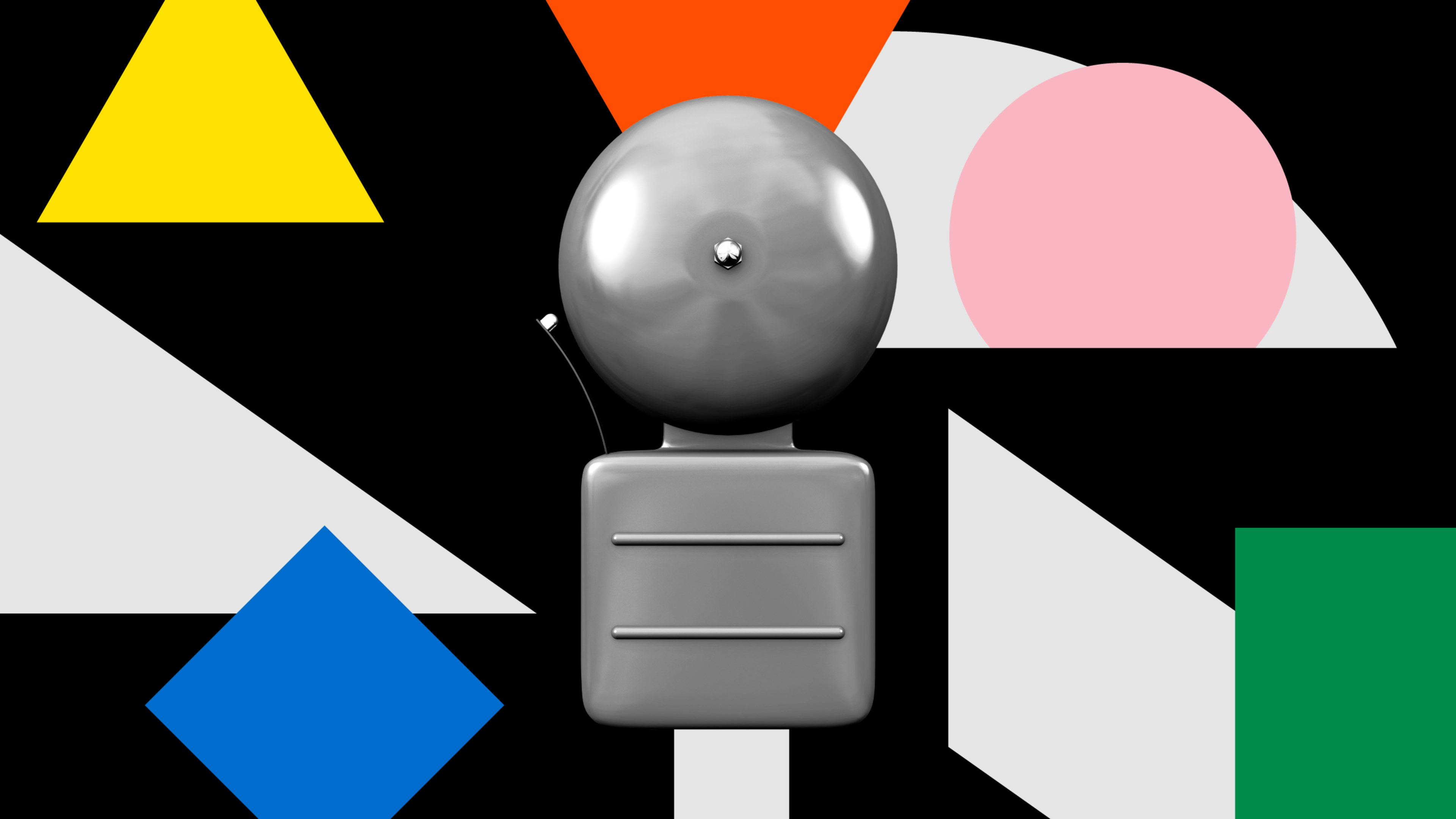In honor of the 10th year of our Innovation by Design Awards, Fast Company asked some of the world’s preeminent designers to identify design’s most pressing challenges. Terri Irwin, director of Carnegie Mellon’s Transition Design Institute, cites a slew of critical problems, from forced migration to political polarization. “Instead of finding a cause célèbre,” she says, “we need to do triage; pick an urgent, local problem and use it as a ‘window’ into the larger system that needs to be transformed.” Here are more than 30 responses suggesting other such windows.—Jay Woodruff

Artificial Intelligence
We are living in an age of many difficulties. Prioritizing these should be done with two filters: How fast-progressing is that crisis? And How much impact can design achieve?
With these in mind, I think the design impact on fast-evolving AI, and the autonomous ‘things’ using it, is the most urgent to address.
We need to impact the way autonomous cars or robots evolve, just as must as we need to address the application of AI throughout our society. The issue is larger than important matters of diversity or inclusion. It is asking ‘What is intelligence?’ and what type of guidance we can or cannot receive through AI.—Gadi Amit, founder, New Deal Design

Circular Economy
The most important issue is designing for the circular economy, an economy that is restorative and regenerative by design. The Ellen Macarthur Foundation has created three principles to build and rebuild overall system health. First, design out waste and pollution. Secondly, keep products and materials in use and regenerate natural systems. And finally, designers must become environmental activists as we are in a position by the choices we make to change our relationship to the natural world.—Ivy Ross, vice president, design for hardware products Google
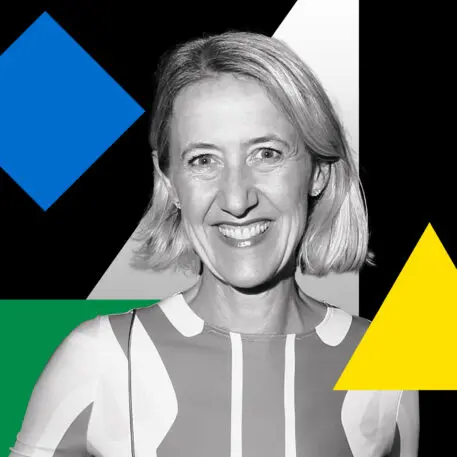
Climate Change
The single most urgent design issue is mobilizing people of all ages to understand the climate heating emergency and take action, working together to turn it around. We just marked Overshoot Day, July 29, not a day to celebrate—our consumption of natural resources surpassed the Earth’s potential to regenerate them, five months prior to “break even.” In 1990, Overshoot Day was October 10. Design can be the lever to lift us out of this global emergency towards a more conscious, responsible, empathetic, and solution-oriented future. We are not changing our lifestyle quickly enough to stop global warming, climate change, and all the issues that go with it. Now is the time for design to wield and manifest its power to come together and collaborate on the biggest problem of humankind.—Caroline Baumann, design consultant and former director, Cooper Hewitt, Smithsonian Design Museum

Our climate crisis is fundamentally reorienting design at Nike — and at large. Given our size and scale, we have a responsibility to do what we can to tackle it. We’re embracing sustainability and how we use our choices to create change. This, to me, is the creative imperative of today and tomorrow.
Considering form and function alone is not enough; our impact — our footprint — must be part of every equation, every decision. In fact, form and function should follow footprint. Beauty and utility both must be tied to sustainability. At Nike, we reject the view that circularity compromises or dilutes design. Nor can it be an add-on, an afterthought, latent or somehow disguised. Instead, let’s welcome the emergent new aesthetics circularity suggests as an opening for dialogue. Sustainability is a non-negotiable — it’s the objective design must reach.—John Hoke, chief design officer, Nike

For example, I am designing a chair using wood waste from lumber production. The chair can be repaired, maintained, and replaced over its lifetime and when its usefulness comes to end, it returns to the forest. The chair’s design encourages a sitting position that assists in an ideal alignment of the spine so that stress is relieved during long hours of sedentary work. With this design, I try to promote living in symbiotic balance with natural resources while enhancing the wellbeing of human life.—Toshiko Mori, principal, Toshiko Mori Architect, and Robert P. Hubbard Professor in the Practice of Architecture at Harvard University Graduate School of Design
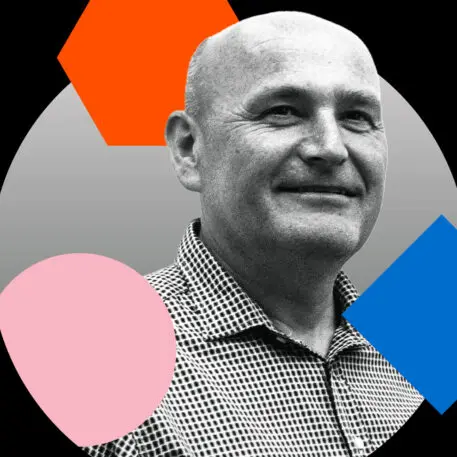
Climate change is undoubtedly the biggest challenge of our time. We cannot rely on businesses and legislation to solve the issue for us. Each and everyone of us must contribute: from more mindful consumption to reducing waste, choosing to support local businesses and switching to green energy, we need to encourage individual participation. Individual buying power has the potential to make or break companies, and we must harness this power to support companies that are focused on delivering a green- and community-focused agenda. Real impact will come from a combination of individual change and government policy.
All design and creative disciplines have a role to play in addressing the climate crisis, from graphic design to digital. From an industrial design perspective, it’s imperative that we design products to last, and that we design in such a way that valuable parts and materials never end up in landfill. We need to look at both minimizing waste, as well as using waste as a resource, something we’re seeing a lot of with the development of new materials.—Paul Priestman, founder and chairman, PriestmanGoode
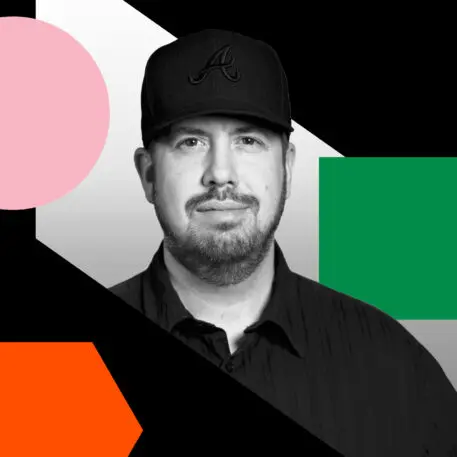
Community
Before we can successfully tackle big issues like climate, sustainability, and racial equity we really need to harness the power of design to reshape community, in the spirit of bringing humans together. Solutions are obviously not easy and they require collaboration, communication, and physically bridging groups under common goals. Design offers us a platform for communication and unification when words fail and if we can solve how design can help us successfully build community as humans, it can be a key to unlock solutions to these broad global issues.—Derek Fridman, design partner, Work & Co.
Conspicuous Consumption
We need to stop designing for ‘right now.’ A lot of the issues we are facing with climate change have to do with our throwaway culture. Our society has focused on convenience over longevity for so many decades that much of our work is disposable. How did we shift from caring more about having something fast and cheap than producing something of quality and substance?
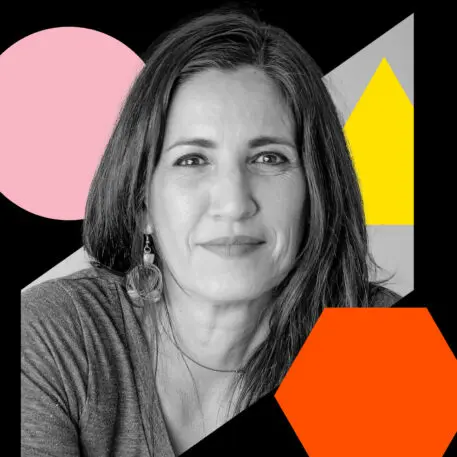
We need to start designing not just within but below our means. Instead of thinking – what’s the most we can do on a project, we should be thinking what’s the least? What’s the smallest move we can make to solve the problem? Every year we consume 1.6 times more resources than the earth has the capacity to regenerate. That means we are borrowing from the future knowing that we never intend to pay it back.
What if we were the caretakers of every beautiful thing we brought into this world and part of our work was to ensure its continued life beyond our own projects? What if we deliberated long and hard about the necessity of every extra finish or detail and its toll on communities and the environment?—Verda Alexander, cofounder, Studio O+A
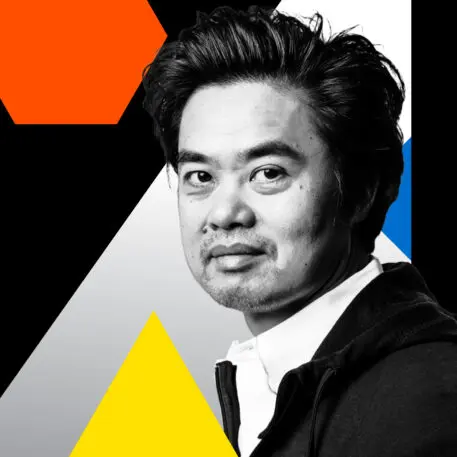
We’re at an inflection point right now, conditioned to feel an immediacy around all things in life. We want the best and we want it at our fingertips. This has an enormous impact on the way we see the world and leads to unintended consequences that stifle our individualism and creativity. Think about the decline of traditional newsprint and they way information is now consumed and delivered by the algorithms that define digital experiences. This rampant evolution was by design, programming “value” into your streams of information by knowing what other people deem “the best.” But when it comes to information, this concept doesn’t translate. Is it the best for you, or just the most viral? Is the information even true?
Many people don’t question their constant consumption habits and this is one of the most powerful levers we have as designers. How do we shift from simply designing more, to designing more meaningfully? How do we give back people’s agency, their ability to discover things on their own and make a richer connection to that experience?
This is the authenticity that has been lacking in our digital experiences. Consumption chips away at it further. Consumption is in direct and obvious conflict with sustainable design, with technology trends like blockchain, cryptocurrency, and NFTs consuming energy at scale – and with speed. The more we design, the more people consume, and the further we dig ourselves into an irreparable situation. Not only have we designed the behaviors that lead to an insatiable appetite for the now, we reinforce it every day.
Design is complicit in the systemic issues of our time. If we can design conspicuous consumption, we can design sustainable consumption with the levers we have to shift behaviors. Let’s work on that together.—Albert Shum, corporate vice president of design, Microsoft
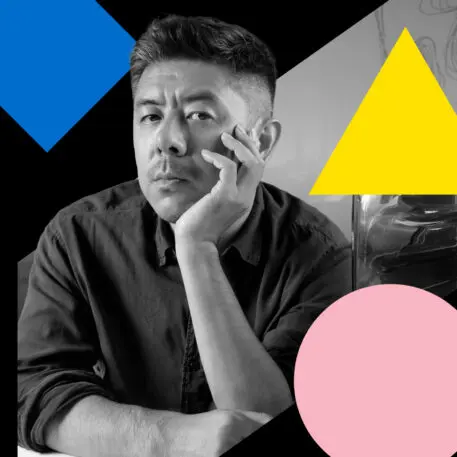
Data Fluency
Today, data is everywhere—in every moment, every event, every transaction or interaction with someone else. Whether we realize it or not, we are surrounded by an entire invisible ecosystem of data. Despite its pervasiveness, data remains an abstract concept for many. Big data, algorithmic bias, machine learning, data mining: these buzzwords have increasing currency in public discourse, yet I’d argue that very few of us can explain what they mean or articulate how they will improve the way we live. Unless you’re a trained statistician, the very idea of data is more likely to feel overwhelming, inscrutable, and even a bit scary.

What is data really? How is it created? What does it do, now and in the future? And how should we use it? These urgent questions were thrown into even starker relief during the pandemic. Suddenly, everyone cared about data as it related to things like COVID-19 case counts, herd immunity, and vaccination rates. But yet again, we saw very clearly a fundamental lack of understanding (even at the highest levels of government!) of what the data was telling us, and what it wasn’t. It’s no wonder that the World Health Organization has called our present moment an “infodemic.”
When it comes to data, I believe there is an urgent need for design to help bring us out of this misinformation morass. This isn’t just a call for mere data literacy—it’s about building data fluency: a foundational, critical understanding of what numbers represent at their most fundamental level. Through a radically new approach to information design, I believe we can work to reinforce that a single data point is like a snapshot, or a record of a specific moment in time. Combined, data can tell rich and nuanced stories about ourselves, our cultures, and our planet. A humanistic approach to data visualization can not only help us find clarity in the confusion, but truly bring us closer to the emotional resonance that is latent in all numbers.—Giorgia Lupi, partner, Pentagram
Data in Healthcare
If there is anything that the COVID-19 pandemic has taught us, it is that data is critical for healthcare decision-making and public health planning. There isn’t a day when every major website or news publication doesn’t present the latest statistics on COVID-19 disease rates and vaccine uptake. The availability of this data provides the unique opportunity for artificial intelligence to make significant contributions to health and health outcomes, but AI is only as good as the quality of data on which its algorithms are developed, and what we have witnessed is a struggling public health data pipeline as the pandemic continues to persist. What have we observed about this struggle for data?
First, there is no universal health information technology system for public health, given the lack of funding and investment over the last two decades. As a result, public health agencies, healthcare systems, and laboratories struggle on a daily basis to share information on COVID-19 cases, hospitalizations, deaths and vaccine uptake. There are 47 metrics that hospitals, laboratories, and acute care facilities are mandated to report on a daily basis to the federal government, such as the number of adult and pediatric cases of COVID-19, hospital occupancy, or the availability of ventilators. Because the technology systems are not connected and cannot seamlessly talk to each other, the work of reporting and integrating this data is manual, burdensome, and prone to generating inaccurate data. I can only imagine the reliance on fax, e-mail, paper and manual entry into excel spreadsheets by beleaguered health professionals that has occurred since this pandemic started.

To address this lack of data infrastructure, government-funded information technology solutions were created, but the results were disastrous. The Centers for Disease Control and Prevention spent $44 million on a website designed by the consulting firm Deloitte called VAMS (Vaccine Administration Management System) to help states with vaccine supply tracking, appointment scheduling, and vaccine uptake. Unfortunately, the software and user experience were dismal: ‘It won’t work on Internet Explorer; it only works in Chrome. The ‘Next’ button is all the way down and to the right, so if you’re on a cell phone, you literally can’t see it,’ one user said. ‘In the first round, people using VAMS mostly had advanced degrees. If you’re 75 and someone asks you to log into VAMS, there is zero way it’ll happen without help.’ Because of the terrible design, some states actually decided to drop VAMS (which was free to use) and decided to pay extra money for alternative technology systems that functioned more effectively. Worse yet, some entities decided to track everything by paper instead and then ironically had to find volunteers to sit in a room and copy all the information into VAMS. If a technology system is so hard to use that individuals revert to paper, that does not bode well for data availability, quality, and accuracy.
Public health agencies and states explored public-private partnerships to acquire access to more modern technology but this came with unintended consequences. For example, at the beginning of the pandemic, Google secured $55 million in contracts with the state of California to support COVID-19 testing (which included symptom screening, appointment booking, and test result reporting). However, enrollment was exclusively online with no ability to talk to an agent on the phone, and there were delays in real-time reporting about testing site locations, which would disproportionately impact underserved communities who had a higher numbers of pop-up testing sites. Furthermore, individuals were required to sign up for Gmail accounts and had to give permission to Google share personal data with third party entities, raising privacy concerns. The partnership was eventually terminated, but if the design of the platform leads to the inadvertent exclusion of certain types of individuals, such as those who may be older, sicker, and less technology-savvy, there will be implicit bias in the data, no matter how amazing the user experience or technology is.
Finally, these data barriers don’t even capture the most important next steps needed, which includes the integration, viewing, and deeper exploration of this imperfect and messy health data, and most critically, the need to effectively translate the data into a compelling call to action for Americans who are reluctant to get vaccinated.—Joyce Lee, professor of pediatrics, University of Michigan
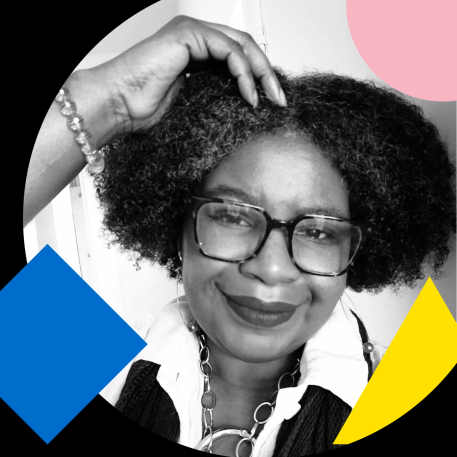
Decolonizing Design
Decolonizing design is an all-encompassing design issue. By respecting and ceding power to Indigenous ways of being and making, we co-create the conditions to solve the climate catastrophe and social and economic disparities, which are directly related to processes of colonization. According to the UN, Indigenous peoples protect over 80% of the world’s biodiversity. As more design firms and institutions reorganize themselves to bring Indigenous peoples and communities directly into them, Indigenous lived experiences and ways of making will change for the better the kinds of design decisions made in the world. This would require changing our standards as to what is a design education, redefining our inspirational designers, and embracing with humility the idea that humans may not be the best designers in the world.—Dori Tunstall, dean of the faculty of design, Ontario College of Art & Design University
Design As A Tool Of Industry
Today’s world is unsustainable. Climate change is perhaps the most potent symptom. It is the result of a complex sociotechnical system involving many environmental factors and the behavior of people, companies, governments, and societies. It is a symptom of a deeper, more fundamental set of causal factors. We must treat the symptoms, but unless we remove the underlying causes, the symptoms will recur. No matter how difficult it is to treat symptoms, it is relatively easy compared to addressing the underlying causes.
A good deal of the blame falls upon people who for millennia designed things, laws, structures of governing, and ways of doing business. As nations and empires evolved, they explored vast parts of the globe, invading and taking over other peoples. The earth was treated as an infinite supply of materials, an infinite place for waste and garbage, and an infinite number of new regions to take over and exploit both its resources and people. Today we recognize that not only is the world finite, but we have already exceeded its capacity. Nonetheless, economic and governmental systems continue this destruction of the environment, people, and cultures.
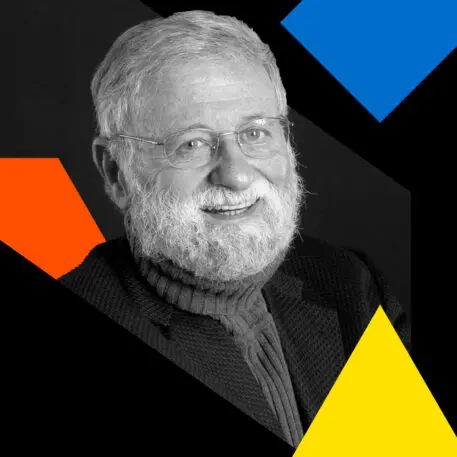
This is design, long before the advent of the discipline that we call design today. Today, design is still a discipline that is a tool of industry, helping companies enlarge the scope of their business, earning larger and larger profits, while creating products that are destructive to the environment as well as new forms of intangible things that have led to massive invasion of privacy and to addiction to media. It is design that has harmed the environment and impacted our lives, helping create a world that pits the rich and powerful against the poor and the weak.
If it is design that got us here, design can get us out. But not the same design that got us here. We need a new design, one tutored in sustainability, equity, and justice. Design must change from being unintentionally destructive to being intentionally constructive. Repairing what has gone wrong. Repairing, collaborating, sustaining.
The root causes are political and economic, deeply embedded in our systems of government, economics, laws, and practices, all of which are artificial structures and modes of practice designed over many centuries. Many result from the colonization of the world by the European powers coupled with the scientific and technological revolutions developed by these powers. Because these are all human-made, they can be changed. And it is designers who should lead the way.
What can designers do? It will not be easy, but all important problems are difficult. Fortunately, designers, schools, and foundations are starting to address these issues. We need to change how the world operates, designing sustainable systems, and where design is done for and by everyone, not just the few, and with sustainability and equity being the goals.—Don Norman, founding director emeritus, Design Lab, UCSD
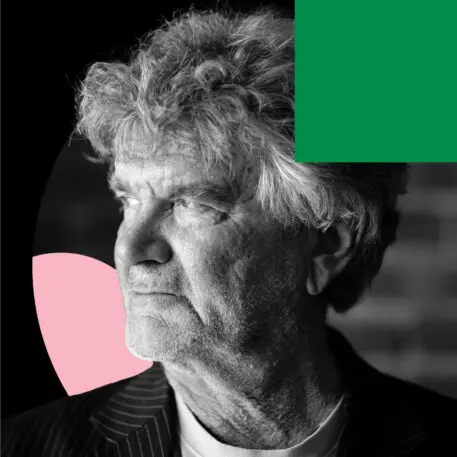
Design Education
Design connects us with an artificial environment of industrial artifacts – physical and virtual — and experiences. Its proliferation is a good thing by principle, but too often has become a tasteless sugarcoating of real-world problems. Add to this respect and economics: Peter Thiel recommended in his book only to hire design students and not to pay for a professional designer. Digital design especially has created a visual junk yard through lack of professionalism. Personally, I consider design an integrative and convergent field. Fractionalization into various design fields doesn’t work. Like in quantum mechanics, single elements cannot be separated from each other.
Design also is about ethics. Facebook uses design as a tool to lock users into their addictive content-porn. Online portals for medical and financial services look like they’re being designed by engineers off a generic template. Logical user guidance and avoidance of errors? We get bombarded by bizarre online research, by “1-10 screens” (it would be an insult to relate this to another primate) and real issues are not even mentioned: public product safety, stopping climate change, racism, and vaccine stupidity. The only design fix would be a better education about the industrial process, supply-chain cycles and design, starting in early high school – as partially done in Germany and China.—Harmut Esslinger, founder, Frog Design

Design Ethics
Technology is reaching all areas of our lives, and it is reaching more people than ever before. Is it reasonable to expect that we can design for such diversity with our current tools? Can we describe pixel perfect screens that fit all situations for all people? Or is it more logical to imbue our tech with ways it can adapt to people’s situations, different preferences, and context? The same phone with the same apps are being used in wildly different situations by people with different abilities and preferences.—Itai Vonshak, head of design and product management, Google Material Design
Digital Health
If anything can be said about how society has adapted to the always on, always connected world of our phones, cars, and televisions, it is that few of us know how to manage all of the feeds and streams the world desperately wants us to stay connected to.
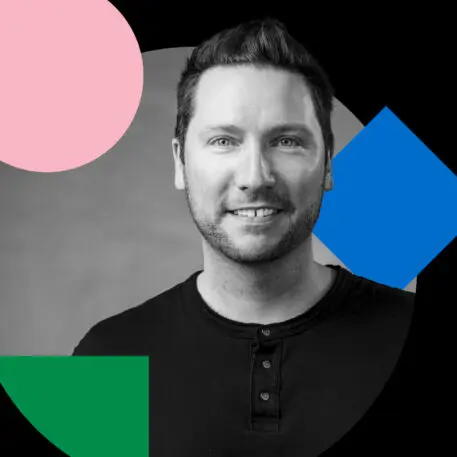
Design crafts our modern world. We connect digital technology to consumers, and in doing so, we create systems that have the ability to consume our attention.
Right now, design needs to help put the right guardrails in place to help manage screen time and have technology better our lives, not distract from it. To be a positive force for change, designers must take on the additional responsibility of not only creating great products and services but also helping people lead healthy digital lives.—Michael DelGaudio, UX manager and design lead, Android TV

Equity
The last two years have given us more insight into where inequity exists and clarified a road map for the role of design to address it. At every level of design—user design, product design, process design, space design, policy design, neighborhood design—it has become more and more clear how our design decisions can mitigate or exacerbate disparities.—Andrew Ibrahim, surgeon and chief medical officer, HOK Healthcare
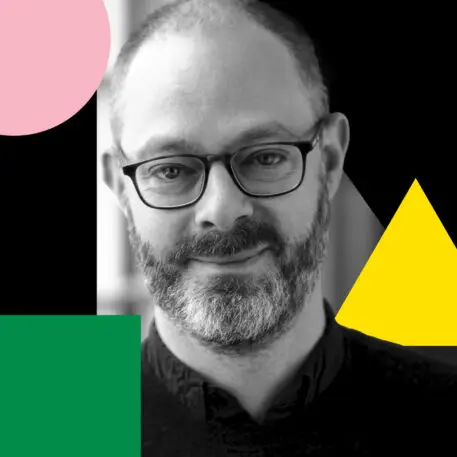
Hybrid Work
The last year has proved that we can design from anywhere with the right tools. However the creative energy of in-person collaboration has dissipated. Over the upcoming months, we need to find a new working model that takes advantage of the efficiency and reach of remote collaboration with the joy and physicality of sharing a design studio with others.—Richard Whitehall, executive director and partner, Smart Design

Inclusion
Products and experiences much be both inclusive and not harmful to the environment. It cannot be one or another. I run into this issue every day when I use a straw. Both of my arms are completely paralyzed so I depend on plastic straws to drink water. The current environmentally sustainable straw replacements are made out of glass, silicone, metal, or wood which don’t have the flexibility necessary for some people with disabilities. Designers left out the needs of the disability community when creating these replacements. It is extremely harmful because this is a community that needs straws to survive. It’s imperative that we design for the edge cases first.—Christina Mallon, chief brand officer, Open Style Lab

I work on voice assistants, and it’s crucial to make sure they work for all people, regardless of accent, dialect, or vocabulary. We also need to ensure people with non-standard speech patterns (for example someone who is suffering from ALS, or who has had a stroke) can use the technology as well.—Cathy Pearl, design manager, Google Assistant
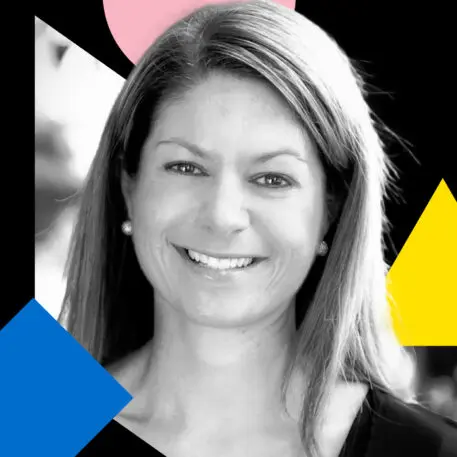
For far too long, technology has been designed in a closed room behind a thick curtain. This has led to discrepancies in information access, experiences, and engagement. But we want to change that and build more inclusive products for everyone.
What I’ve come to realize is that it starts with who’s in the room and at the table (or, these days, on the video call). When we bring together diverse teams and our users’ many perspectives into every part of the design process – in ideation, research, testing, launch, and iteration – we build better products, which result in better outcomes.
Let me share an example: voice as a modality. Speech recognition was initially developed for people with motor impairments who were unable to use a keyboard. Back then, it was considered accessibility technology. But by solving problems for some, we catalyze innovation for many.—Catherine Courage, vice president of user experience, Google
Local Problems
I think the biggest issue for professional designers as well as experts from all fields and disciplines is how to address the many complex, “wicked” problems confronting us in the 21st century. Problems like climate change, forced migration, terrorism, social and political polarization, systemic oppression, global pandemics and many more are interconnected, interdependent problems that manifest in place and culture-specific ways. These problems cannot be solved by a single discipline or profession; it requires radical collaboration across multiple fields and disciplines, in a co-design process with the stakeholders connected to and affected by the problem.

So, I will respectfully resist singling out or ranking the problems we’re facing in the 21st century because they are all interconnected and interdependent. Instead of finding a cause célèbre, we need to do triage; pick an urgent, local problem and use it as a window into the larger system that needs to be transformed. We argue that wicked problem resolution is actually a strategy for intentionally transitioning large systems toward the long-term futures we want. Futures that are more sustainable, equitable and desirable.—Terry Irwin, director, Carnegie Mellon’s Transition Design Institute
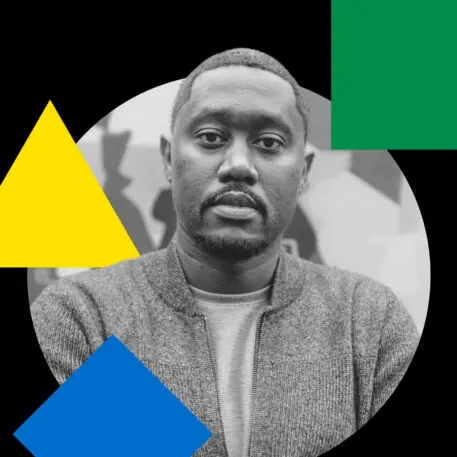
Malignant Capitalism and White Supremacy
Cultures of entrenched white supremacy and malignant capitalism shape every aspect of the design field. Deconstructing and decoupling the process and outcomes of the design profession from these base instincts is the single most urgent design issue we are facing today. In this system, the single most urgent design issue will always be about the survival of disinherited communities.—Bryan Lee, design principal, Colloqate
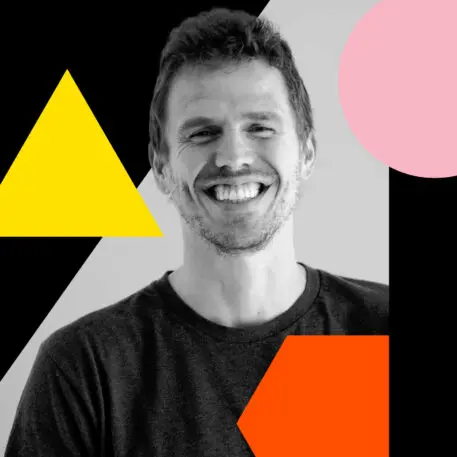
Mental Health
There are many urgent needs in my opinion, but one that is often overlooked is design’s impact on our mental health [caused by] easy access to information and the even easier ways for people to share information and create content. We are at an [inflection] point of oversharing where it’s hard to understand and separate truth from opinions. Design has a huge role in this matter. We design for high engagement in order to improve efficiency, however we have to start focusing on the impact of this engagement on our mental health. Too many options, too much news, too much influence, too many opinions. ‘Less is more’ has never been more relevant in our pursuit to deliver great design with long-lasting positive effects on our mental health.—Fábio Sasso, senior designer, Android for Cars
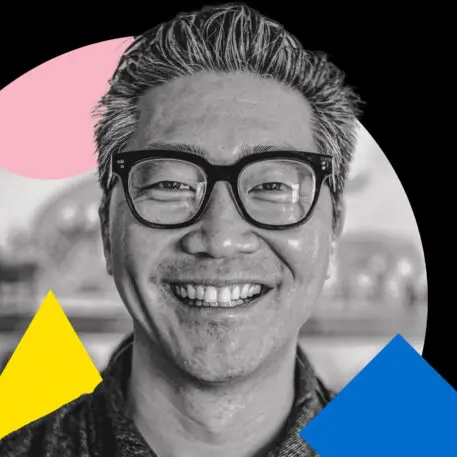
The Next Pandemic
The U.S. healthcare system was not designed to respond to a pandemic. COVID-19 exposed the fractures in a decentralized, uncoordinated delivery system that ran out of PPE, botched testing, and used faxes to share emergency medical data. Instead of overhauling the system, we are backpedaling toward business as usual. We need to start designing our response to future pandemics while we are still in this current one. How might we allow for real time data sharing between hospitals, health departments, and citizens? How can we strengthen medical supply chains? How can we design for equity in public health?—Bon Ku, emergency physician and director, Health Design Lab, Thomas Jefferson University
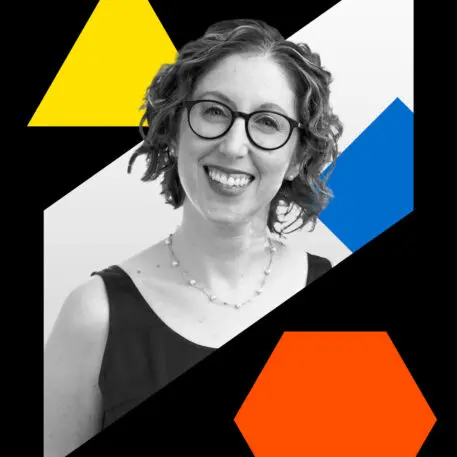
Systemic Racism
Systemic racism is not just an issue, it’s the issue. As more designers are transitioning into working on social change—tackling inequities in housing, healthcare, and education—we must acknowledge that systemic racism is the root cause underlying all of these disparities. While I don’t believe designers should try to become DEI consultants, we must work to understand and undermine the ways that racism shows up, including at the internalized, interpersonal, organizational, and structural levels. If we can design interventions to dismantle this keystone of our unjust society, more of the bricks that hold us all back will fall.—Sara Cantor, cofounder, Greater Good Studio
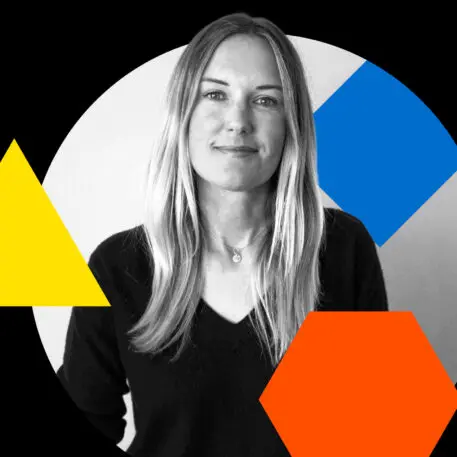
The Talent Pipeline
We don’t have enough up-and-coming design leaders waiting in the wings. The demand for experienced candidates to run design teams is outpacing the number of people who are qualified and interested in these roles. Every week the list of open design leadership positions grows at both large companies and startups alike, and the same group of folks plays musical chairs. We need to focus on mentoring potential leaders, expand where we look for them, redefine what our definition of a great design lead is, and reduce unconscious bias in hiring.—Kate Aronowitz, lead operations partner, GV

Trust
We need to design products and experiences that allow people to regain control of their digital lives – technology should adapt to us versus us having to adapt to it. This starts with creating user experiences that are intuitive, functional, and easy to understand, which generate confidence and a sense of faculty. True personalization is an integral component of this – if a person is able to customize their experience in a way that meaningfully reflects their choice and personality, they will be able to feel much more competent and comfortable in navigating the complexities of an ever-evolving digital landscape.—Sebastian Bauer, senior director of design, Android and Pixel
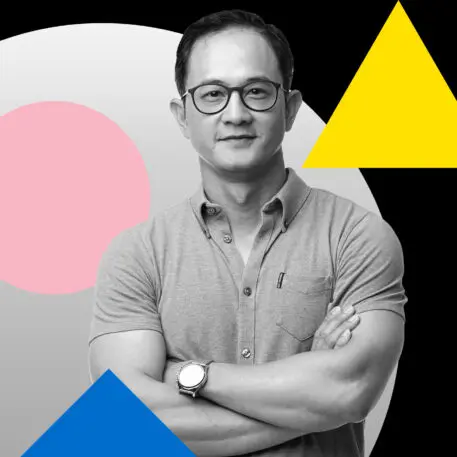
We are awash in information and content, but technology has made it easy to create and distribute misinformation with real consequences to our individual and collective well-being. How can we design products and systems in which trustworthy entities thrive and untrustworthy ones don’t?—Paolo Malabuyo, director of user experience for YouTube Advertising at Google

Unintended Consequences
How do you choose between climate change, misinformation, or societal inequities? There’s something underlying all these issues that designers need to pay particular attention to, especially now — and that’s the responsibility of design and its unintended consequences. Good design is a powerful force that can shape hearts, minds, and behavior. Too often, design optimizes for solving the immediate problems at hand or immediate user needs and wants. It is more important than ever to slow down, zoom out, look at things from all different perspectives, and consider the long-term and broad societal impact of anything we make. Good design makes our lives better. Great design makes the world better.—Robert Wong, vice president, Google Creative Labs

Waste
The most urgent design issue we have in our society is a system design issue at the most fundamental level: extracting finite resources and outputting waste. Waste is a design flaw and a bi-product of a colonial linear system — extract, exploit, discard. The colonial linear systems of extraction and waste are creating a climate disaster as they operate under the delusion that they are disconnected from the context in which they operate—nature.—Céline Semaan, founder, Slow Factory
Reporting by Suzanne LaBarre
See more from Fast Company’s 2021 Innovation by Design Awards. Our new book, Fast Company Innovation by Design: Creative Ideas That Transform the Way We Live and Work (Abrams, 2021), is on sale now.
Recognize your brand’s excellence by applying to this year’s Brands That Matter Awards before the early-rate deadline, May 3.
